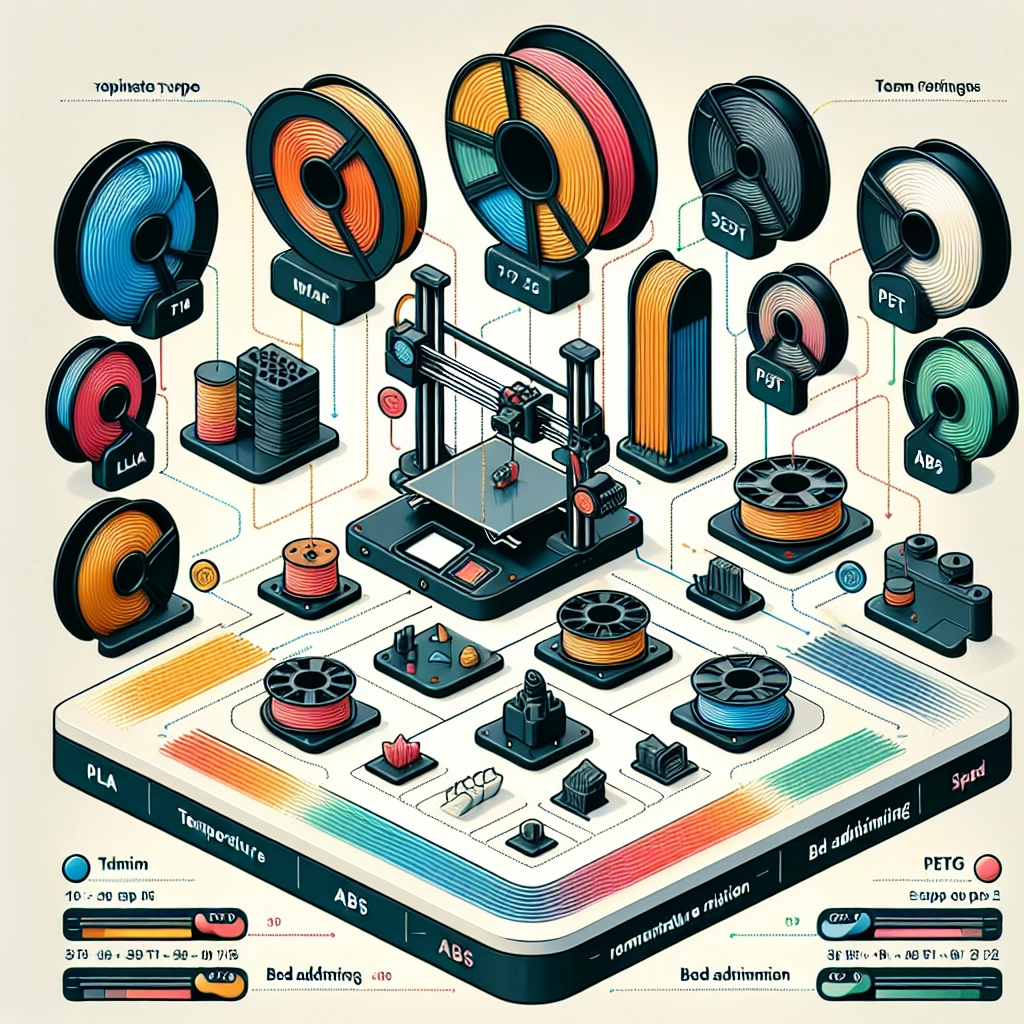The Best Settings for Different 3D Filaments
3D printing has come a long way since its inception, and with a myriad of filament options available out there, understanding how to optimize your prints is key to achieving stellar results. Whether you’re a newbie or a seasoned maker, knowing the right settings for different types of filaments can drastically change the quality, strength, and finish of your printed objects. Let’s dive into the best settings for some of the most popular 3D printing filaments.
PLA (Polylactic Acid)
PLA is the go-to filament for many beginners due to its ease of use and versatility. Here are some optimal settings:
- Nozzle Temperature: 180°C – 220°C
- Bed Temperature: 50°C – 60°C
- Print Speed: 50 mm/s – 60 mm/s
- Layer Height: 0.1 mm – 0.2 mm
- Cooling: Use a cooling fan at 100% to prevent warping.
PLA is less prone to warping, making it perfect for beginners. Its low printing temperature allows for faster print times, but always keep an eye on the nozzle temperature—if it’s too low, the filament won’t flow smoothly, and if it’s too high, you might get stringing.
ABS (Acrylonitrile Butadiene Styrene)
While ABS offers excellent durability and flexibility, printing with it can be a tad tricky. Here are your best settings:
- Nozzle Temperature: 210°C – 250°C
- Bed Temperature: 90°C – 110°C
- Print Speed: 40 mm/s – 50 mm/s
- Layer Height: 0.1 mm – 0.3 mm
- Enclosure: Ideally, use a printer enclosure to maintain temperature and avoid warping.
ABS is known for its strength and impact resistance—it’s often used for functional parts or prototypes. However, keep in mind that it can emit odors, so good ventilation is crucial.
PETG (Polyethylene Terephthalate Glycol)
PETG is a wonderful blend of ease of use and high-performance properties. Here’s how to set it up:
- Nozzle Temperature: 220°C – 250°C
- Bed Temperature: 70°C – 80°C
- Print Speed: 40 mm/s – 60 mm/s
- Layer Height: 0.1 mm – 0.2 mm
- Cooling: Moderate cooling is usually beneficial, so set your fan speed around 50%.
PETG is tougher than PLA and has some level of flexibility, making it excellent for functional parts. It’s also less prone to warping but may string more than PLA, so tweaking your retraction settings can help combat this.
TPU (Thermoplastic Polyurethane)
TPU is a flexible filament that can be utilized for a variety of applications, from phone cases to medical devices. It requires special care:
- Nozzle Temperature: 220°C – 250°C
- Bed Temperature: 20°C – 60°C (usually, adhesion can be good without heat)
- Print Speed: 20 mm/s – 30 mm/s
- Layer Height: 0.1 mm – 0.2 mm
- Retraction: Minimal to none to avoid clogging.
The key with TPU is to go slow. A lower print speed is necessary to allow the filament to flow out smoothly while also preventing any jams. Make sure to use a direct drive extruder if possible, as Bowden setups can sometimes struggle with flexible filaments.
Nylon
For those looking for strength and durability, Nylon is a solid choice but comes with its own quirks:
- Nozzle Temperature: 220°C – 260°C
- Bed Temperature: 70°C – 100°C
- Print Speed: 30 mm/s – 50 mm/s
- Layer Height: 0.1 mm – 0.2 mm
- Enclosure: An enclosure is beneficial to prevent warping.
Nylon can absorb moisture, so proper storage is crucial. Additionally, it tends to warp; therefore, print on a heated bed and consider using a brim or raft to alleviate this issue.
Finding What Works for You
Remember, these settings are just a starting point. Every 3D printer and filament batch can behave differently, so it’s often a good idea to do a few test prints to dial in the best settings for your specific setup. The beauty of 3D printing lies in experimenting and uncovering what works best for your projects! As you gain experience, you’ll develop your own comfort zone with these filaments and find the ideal settings that resonate with your unique printer and style. Keep printing, stay curious, and enjoy bringing your creative ideas to life!

